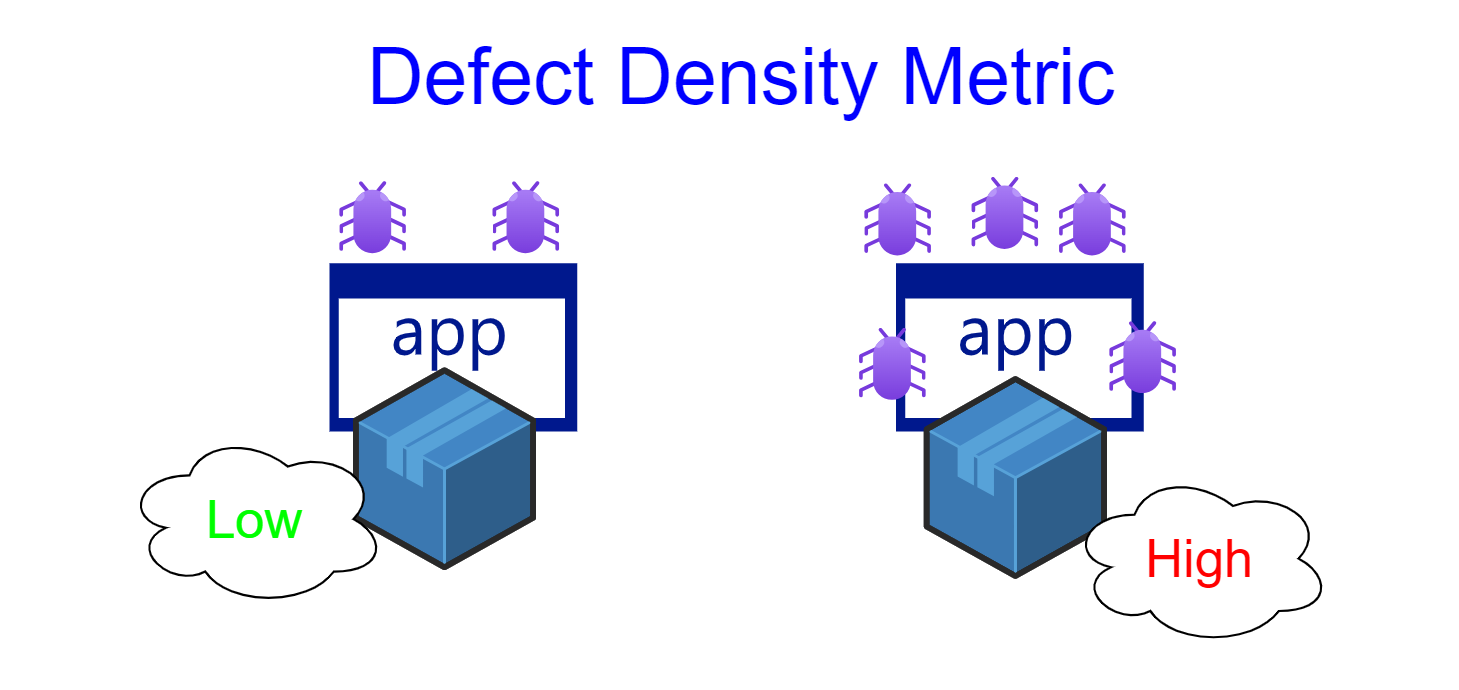Defect Density Metric
Overview
In this tutorial, we will learn about defect density software testing metrics. The defect density metric defines the number of defects in a software module.
Defect Density Formula
Defect density is typically expressed as defects per unit of measurement, such as defects per line of code, defects per function point, etc.
The general formula for calculating the defect density metric is as follows:
Defect Density = (Number of Defects) / (Measurement of Size/Effort)
or
Defect Density = (Number of Defects)/(Size of the software module)
The size of the software module is measured in the number of Lines of Code (LOC).
The variations in metrics are based on the software size calculation. Based on different software sizing methods, we can have the below variations:
- Defects Per Line of Code (DPLC)
- Defects Per Function Point (DPFP)
Defects Per Line of Code (DPLC)
This metric calculates the number of defects for every line of code written. It is a straightforward way to measure defect density but may not be as accurate if lines of code are inconsistent in complexity.
DPLC = (Number of Defects) / (Total Lines of Code)
Defects Per Function Point (DPFP)
Function points are standardized measures of a software application’s functionality. DPFP measures the number of defects for every function point, which can provide a more meaningful measurement, especially for large and complex systems.
DPFP = (Number of Defects) / (Total Function Points)
Example
Let’s understand the concept with an example. Consider the software module with 2000 lines of code(LOC). It has 25 defects. Calculate the DPLC.
Based on the example:
Size of the software module = 2000
Number of defects found in the module = 25
Defect Density = 25/2000= 0.0125
The defect density metric helps to find the area for correction and improvement. It is used to assess the quality and reliability of software code and can help development teams identify areas that may require additional testing or improvement.

Defect density is an important metric for software testing as it enables software teams to monitor the quality of the software being tested over a period of time. A higher defect density implies that the software has more defects than its size or the effort put into it, indicating potential quality problems that require attention. Conversely, a lower defect density indicates superior software quality.

